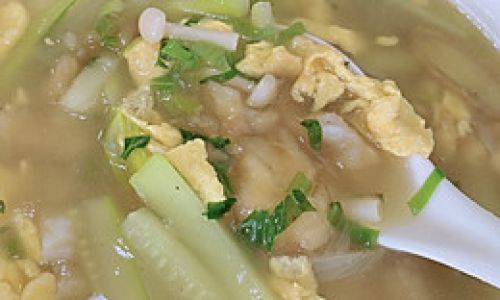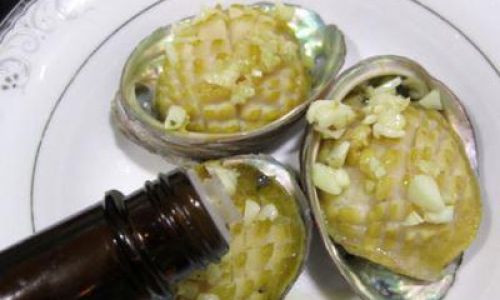A Step-by-Step Guide to Crafting the Perfect Straw Mushroom and Fish Fillet Soup: Traditional Techniques and Modern Twists**
Straw mushroom and fish fillet soup, a beloved dish in many Asian cuisines, combines the delicate flavor of fresh fish with the earthy, slightly nutty taste of straw mushrooms. This soup is celebrated for its light yet satisfying texture, aromatic broth, and nutritional benefits. Originating from Southeast Asia, particularly in countries like Thailand, Vietnam, and China, this dish has evolved into a global favorite, adapting to local tastes while retaining its core essence. The beauty of this soup lies in its simplicity—few ingredients, minimal fuss, and a result that feels both comforting and elegant. Whether you’re a seasoned home cook or a novice in the kitchen, mastering this recipe will equip you with a versatile dish suitable for family dinners, casual gatherings, or even upscale dinner parties. In this comprehensive guide, we’ll explore the history of straw mushroom and fish fillet soup, dissect its key components, and walk through each step of its preparation, ensuring your final dish is nothing short of exceptional.
The Ingredients: Building Blocks of Flavor
To create a memorable straw mushroom and fish fillet soup, selecting the right ingredients is paramount. Each component plays a distinct role in balancing the dish’s flavors and textures.

- Fish Fillets: The star of the dish, the fish should be fresh, firm, and mild-flavored to avoid overpowering the soup. Popular choices include cod, tilapia, sea bass, or snapper. Avoid oily fish like salmon or mackerel, as their strong flavors can clash with the soup’s subtlety.
- Straw Mushrooms: These small, brown-capped mushrooms are prized for their meaty texture and ability to absorb surrounding flavors. Fresh straw mushrooms are ideal, but canned or dried varieties can work if properly prepared.
- Aromatics: Ginger, garlic, and shallots form the flavor base. Ginger adds warmth and helps neutralize any fishy odors, while garlic and shallots contribute depth and sweetness.
- Broth: A clear, flavorful broth is essential. While store-bought fish or vegetable broth can be used, homemade broth—simmered with bones, herbs, and aromatics—elevates the dish.
- Vegetables: Add-ins like carrots, bok choy, or snow peas introduce color, crunch, and nutrients.
- Seasonings: Light soy sauce, fish sauce, sesame oil, white pepper, and a pinch of sugar enhance the soup’s savory profile without overwhelming it.
- Garnishes: Fresh cilantro, scallions, and fried shallots add freshness and texture.
Preparation: Mise en Place
Before igniting the stove, meticulous preparation ensures a seamless cooking process.
- Fish Fillets: Rinse the fish under cold water and pat dry. Remove any pin bones using tweezers. Slice the fillets into bite-sized pieces, ensuring they’re uniform in thickness for even cooking. Marinate the fish in a mixture of light soy sauce, sesame oil, and white pepper for 10–15 minutes.
- Straw Mushrooms: If using fresh mushrooms, trim the ends and halve them. For canned mushrooms, drain and rinse to remove excess salt. Dried mushrooms require rehydration in warm water for 20 minutes, followed by a gentle squeeze to release grit.
- Aromatics: Peel and mince garlic and ginger. Slice shallots into thin rings.
- Vegetables: Julienne carrots, chop bok choy into bite-sized pieces, and trim snow peas.
- Broth: If making homemade broth, simmer fish bones or heads with water, ginger slices, and a splash of rice wine for 30 minutes. Strain and discard solids.
Cooking Process: Step-by-Step Mastery
-
Sauté Aromatics
Heat a neutral oil (e.g., vegetable or canola) in a large pot over medium heat. Add the minced garlic, ginger, and shallots. Sauté until fragrant and golden, approximately 2 minutes. Avoid browning, as this can impart bitterness. -
Build the Broth
Pour in the prepared broth (8–10 cups, depending on desired serving size). Bring to a gentle simmer. Add a splash of fish sauce, a pinch of sugar, and a few white peppercorns. Adjust seasoning to taste—the broth should be subtly savory, not overpowering. -
Introduce Straw Mushrooms
Add the straw mushrooms to the simmering broth. Allow them to cook for 5–7 minutes, until tender. Their earthy aroma will infuse the broth, creating a rich umami base. -
Incorporate Vegetables
Add harder vegetables like carrots first, simmering for 3–4 minutes. Follow with quicker-cooking greens like bok choy or snow peas, cooking until vibrant and crisp-tender. -
Poach the Fish
Gently lower the marinated fish fillets into the simmering broth. Use a slotted spoon to submerge them without stirring vigorously, which could break the delicate fish. Poach for 3–4 minutes, until the flesh turns opaque and flakes easily. Overcooking will result in dry, rubbery fish—err on the side of undercooking, as residual heat will finish the process. -
Finish with Aromatics and Seasonings
Drizzle a teaspoon of sesame oil over the soup for a nutty finish. Adjust seasoning with additional soy sauce or fish sauce if needed. A squeeze of lime juice can brighten the broth, though this is optional.
-
Garnish and Serve
Ladle the soup into bowls, ensuring each serving includes fish, mushrooms, vegetables, and broth. Top with fresh cilantro, sliced scallions, and a sprinkle of fried shallots for crunch. Serve immediately with steamed jasmine rice or crusty bread.
Troubleshooting and Expert Tips
- Mushy Fish: To prevent overcooking, remove the pot from heat once the fish is added. The residual heat will gently cook the fillets.
- Cloudy Broth: Avoid boiling the broth vigorously, as this can emulsify proteins and create a murky appearance. Maintain a gentle simmer.
- Lack of Depth: Enhance the broth with a splash of rice wine or a teaspoon of miso paste for added complexity.
- Allergy Substitutions: For gluten-free diets, use tamari instead of soy sauce. Vegetarians can substitute fish sauce with coconut aminos or additional salt.
Variations and Customizations
- Spicy Kick: Add sliced chili peppers or a dollop of chili oil during serving.
- Creamy Twist: Swirl in a tablespoon of coconut milk or heavy cream for a richer texture.
- Herbaceous Notes: Experiment with fresh herbs like basil, mint, or dill.
- Protein Swap: Replace fish with shrimp, scallops, or tofu for a vegetarian version.
- Noodle Addition: Stir in cooked rice noodles or glass noodles to transform the soup into a heartier meal.
Cultural Significance and Health Benefits
Straw mushroom and fish fillet soup holds cultural significance in many Asian societies, often served during festivals, family reunions, or as a remedy for colds. Its lightness makes it a palate-cleansing starter, while its warmth soothes the soul. Nutritionally, this dish shines: fish provides omega-3 fatty acids and lean protein, mushrooms offer fiber and antioxidants, and the broth hydrates while delivering essential minerals. The ginger and garlic contribute anti-inflammatory properties, making this soup both a culinary delight and a healthful choice.
Conclusion
Crafting the perfect straw mushroom and fish fillet soup is an art that balances precision with creativity. By respecting traditional techniques while embracing modern adaptations, you can create a dish that delights the senses and nourishes the body. Whether you’re a purist adhering to age-old recipes or a culinary explorer experimenting with bold flavors, this soup invites endless possibilities. So, gather your ingredients, heat your pot, and savor the journey of transforming simple elements into a timeless masterpiece. Your table awaits a bowl of comfort, tradition, and unparalleled flavor.





0 comments